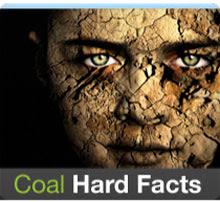The health benefits of the Clean Air Act have netted profit to the American economy. Environmental technologies industry currently generates nearly $300 billion per year in revenue, producing $40 billion in exports, and employing 1.6 million Americans.
Click here to take action.
92% = Drop in airborne lead levels since 1980. The Clean Air Act called for an end to use of lead — an acute neurotoxin that lowers IQ in children and shortens lives — as a gasoline additive. (source)
60 = Number of U.S. metro areas that, without the Clean Air Act, would have higher total suspended particulate concentrations than present-day Moscow. Particulate pollution causes lung cancer, asthma, cardiovascular issues, and premature death. (source)
295 million = Skin-cancer cases averted by 2075, courtesy of the Clean Air Act program eliminating use of ozone-depleting CFCs. (source)
$42 = Quantifiable benefits generated by each dollar invested in Clean Air Act programs during the law’s first 20 years — that’s $523 billion in, $22 trillion out. (source)
5% = Amount of tailpipe pollution produced by a typical late-model car, compared with older models. Clean Air Act programs spurred automakers to develop and deploy catalytic converters, computerized emissions-control systems, and other innovative technologies. (source)

13,000 = Lives still cut short each year by pollution from coal-fired power generation. The nation’s coal-burning power plants are the leading source of toxic mercury emissions, and half of them still lack scrubbers and other basic pollution control technologies. (source 1, source 2)
$100 billion = Annual cost of continuing adverse health impacts — deaths, hospitalizations, heart attacks, acute asthma attacks, lost work days — from dirty coal. (source)
2.5 million = Days of missed work or school averted by tightening the “smog rule,” which establishes allowable levels of ground level ozone, from 0.075 ppm to 0.060 ppm.
1.85 billion = Barrels of oil saved over the lifetime of model-year 2012–2016 cars and light-duty trucks, under landmark greenhouse gas standards issued by EPA in April 2010.
960 million = Tons of greenhouse gases conserved by these tailpipe standards, which stem from the Supreme Court's 2007 ruling that carbon dioxide and other greenhouse gases do meet the Clean Air Act definition of an air pollutant, and EPA's subsequent finding that greenhouse gases do indeed "endanger both the public health and the public welfare of current and future generations."
93% = Percentage of Congressional lawmakers — Democrats and Republicans both — voting Yes on 1990 Clean Air Act Amendments, subsequently signed into law by President George H. W. Bush. It remains to be seen if, in today’s polarized political climate, this bipartisan tradition can be preserved or will crumble at the expense of all Americans.
via Environmental Defense Action Fund
via Environmental Defense Action Fund
Tags:

3 comments:
would change the Clean Air Act to delay or eliminate the regulations. .. strategy known as "de-funding" would be harder for Democrats to stop....
Doxycycline
Many governments forget all about the environment when there's a need for cutting back in their expenditures. Especially teh US should take on their leading role in the world on this subject, but every government should take their responsibility for their peace of soil. It's all we've got!
Muc appreciated, as a small contribution towards clean air I must attract your attention to PALS, PALS is Pure Air Lovers Society it's a growing bunch of people who believe in working towards keeping the air clean.
Post a Comment